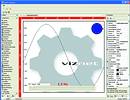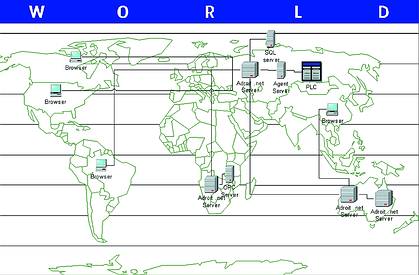
Bill Gates was recently quoted as saying, “As a result of the changes in how business and consumers use the Web, the industry is converging on a new computing model that enables a standard way of building applications and processes to connect and exchange information over the Web.” The trend is quite clear, no matter what industry or field you compete in, the .NET architecture/framework will affect you.
The dawning of this new Internet age is thought to be the biggest advance since Microsoft Windows replaced the DOS operating system. Internet has evolved from the beginning with static Web pages with no dynamic content to Active Server Pages rendering dynamic content, to Web Services that allow the developers to expose `objects' over the Internet.
Objects
An object is a set of functions and properties that make up a part of an encapsulated entity used by an application. Examples of objects are: A picture in a scada or the communications code that allows a user interface to communicate with a Server.
Web services are objects exposed using XML (extensible markup language) documents and SOAP (simple object access protocol). XML is a text-based protocol that provides data as well as a description of the data allowing users to easily interpret the data being received. Internet applications are now able to consume Web services and incorporate these objects as part of their solution; because Web services use XML on the public Internet port (80) anyone can consume or write Web services for deployment over the Internet and for communication through ever-present firewalls.

To summarise:
A Web service is an application running as a service delivered over the Web and it uses XML so anyone can consume or write Web services.
Smart devices and clients are devices that know how to consume a Web service. Examples of smart devices are the Pocket PC (running Microsoft Windows CE), Smart Phone, Microsoft XBox and tablet PC. Examples of smart clients are Microsoft Windows CE.NET through to desktop and server operating systems like Microsoft Windows XP.
To solve the historical connectivity complications and address foreseen consumer pressure, the process automation industry will be forced to enter the .NET domain, with smart PLCs, programmable controllers, field equipment (valves, etc) and devices with a connection to the Web. This data, in turn will simply become available through Web services.
A few of the problems facing scada developers are the complications in dealing with the realtime world. Scada is required to deliver data and graphics at typically sub-second resolution and potentially lots of it! It is not unusual to be dealing with up to 1000 changes per second on a large project of say 10 000 I/O. The Internet was never designed to deal with this kind of throughput. Yet a new generation of scada needs to be able to handle the differences between a LAN/WAN and the Internet. When people speak about 'thin-client' it is generally understood that a product is required to deliver graphics over the Internet. The scada I/O server would typically reside on the fast plant network; to ensure that server side functionality of fast PLC comms, alarms, events and historical data integrity is maintained.
It is also probably worthwhile spending a minute discussing the concept of zero-client, thin-client and thick client. A zero-client is one in which there are no components installed when viewing content, this typically is used where ASP (active server pages) delivery is used and very often restricted to mainly text type content, usually pure HTML based. A 'thin-client' on the other hand offers richer functionality, may or may not be viewed in a browser, and generally requires a installation having a small footprint. This being one that installs itself over the Internet upon a user connecting to that particular application, or may require an installation on a machine. Often the browser becomes simply an application container in that it houses the application that in turn 'understands' how to present the data, being viewed. A thick-client on the other hand is one in which the user is required to perform an installation on any client-side machine. Most scada applications currently running fall into the second and third categories discussed.
Adroit Technologies, the developers of the Adroit scada product, says that it is well down the line in developing its .NET offering. Codenamed VIZNET, this new generation product is set to take full advantage of the .NET framework and offer users the best of both worlds. It will remotely install whatever windows controls are necessary to view the configuration, and will offer full support for viewing mimics over the Internet. Mimics will be stored centrally, offering easy management of a project. Viewing and delivery of data to client machines will be over the Web, using Web services. Users will, in turn be able to consume Web services from other sources and have these displayed concurrently with the scada graphics.

The award winning vector-based graphics will be enhanced using the new GDI+ (graphics device interface) Windows graphics technologies. The communications between server and client will change depending on what medium is being used ie, a fast LAN or a slow Internet link.
The full implications cannot be addressed without looking at the entire .NET environment. The trends are the same in every environment whether it be in the office, factory, manufacturing or process control areas of data gathering and manipulation.

For more information contact Dave Wibberley, Adroit Technologies, 011 781 3513, [email protected], www.adroit.co.za
Dave Wibberley, a BSc Mechanical Engineer with a post-graduate degree in Industrial Engineering combined with eight years experience of running his own systems integration business sees him well placed to understand trends within the scada industry and its role in the future of manufacturing.
| Tel: | +27 11 658 8100 |
| Email: | [email protected] |
| www: | www.adroitscada.com |
| Articles: | More information and articles about Adroit Technologies |

© Technews Publishing (Pty) Ltd | All Rights Reserved